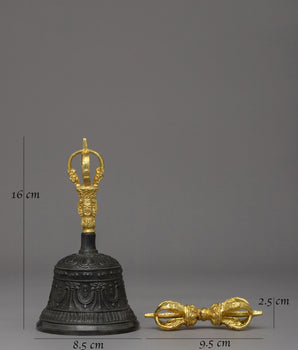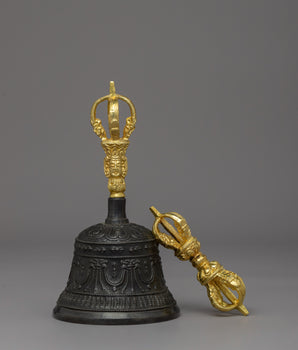Eight Stupas, One Enlightened Life: The Sacred Events of the Buddha
Buddhism is an ancient religious practice in the world that is centered on historical tradition and symbolism, and sacred architecture. The construction of stupas is one of its most iconic structures, as it entombs relics and serves as a remembrance of some of the significant events in the life of the Buddha. The greatest of them are the Great Eight Stupas or the Eight Great Events Stupas. All these stupas are special events in the life of Siddhartha Gautama, the historical Buddha, and together, all these stupas are spiritual remembrances to the followers and pilgrims. They illustrate major milestones of the Buddha’s life, a profound visual and devotional journey for practitioners and visitors. They not only record the tales of the Buddha’s life, and the importance of Buddhist values (wisdom, compassion, discipline, harmony, and enlightenment).
What are The Great Eight Stupas?

The Eight Great Stupas, also known as the Eight Great Events Stupas, are Buddhist monuments that represent eight significant events in the life story of the Buddha, Siddhartha Gautama. Every stupa is a metaphorical representation of a given moment that holds high spiritual and historical significance. Taken together, a meditative and visual map of the Buddha: his birth, enlightenment, his teachings, his miracles, and his last liberation.
These eight events not only tell a tale of the Buddha's life, but also capture the essence of the central teachings of the Buddhist way. Therefore, every stupa is a form of teaching. This spiritual symbol reminds people about the progressive levels of spiritual growth and virtues a human should develop on their path towards enlightenment.
The Origin of the Great Eight Stupa

(Photo From Ratna Voyage)
The stupa-building Buddhist tradition originated during the Buddha's lifetime, and the stupa-building process has become a significant cultural aspect of Buddhism. After the Parinirvana of the Buddha, his bodily relics were divided, and eight parts were distributed among the kingdoms of ancient India. As a result, stupas were built, with some of these relics contained within. These primitive stupas acted as places of meditation, pilgrimage, and worship. The Great Eight Stupas became symbolic towers representing the essential aspects of the life of the Buddha, and it started with the birth of the Buddha as a miraculous child. It ended in the final release of the Buddha.
In Tibetan Buddhism, the idea of the Eight Stupas further developed the architectural formalities of each stupa as a representation of the exact occasion it depicts. The stupas had different names and forms, each embodying a distinct meaning; practitioners were able to recognize and meditate on the events in the life of the Buddha.
Such stupas were primarily built in monasteries, holy valleys, and pilgrimages, and they could be turned into great didactic tools. The text of the Tibetan Buddhist tradition explains that the merit created by the construction or circumambulation of these stupas is identical to the realization of the Buddha's teachings and guides the person along the path of enlightenment. Today, the construction of such stupas is undertaken in many parts of the world as an act of spiritual activity, cultural preservation, and also to remind its initiates about the life of the Buddha and his teachings.
The Eight Great Stupas and Their Meanings

The eight great stupas represent an essential event in Siddhartha Gautama's life. All of them symbolize the Master's transition through this world's stages to reach its end and become liberated. They are more than just buildings: they embody philosophical values and serve as a source of meditation, ethics, and moral education, which collectively define Buddhism.
The Eight Great Stupas, their symbolic meaning, and the sacred event they commemorate:
1. The Lotus Blossom Stupa

Event: The Buddha's birth
Symbolic Location: Lumbini, Nepal
This stupa marks the marvelous birth of Siddhartha Gautama at the gardens of Lumbini. The legend that he was born standing with the branch of a Sal tree held by Maya Devi. The newborn Buddha is believed to have taken seven steps immediately after birth; lotus flowers grew wherever his steps could land. This is the reason it was named the Lotus Blossom Stupa.
Symbolism: This stupa symbolizes goodness, possibility, and a wind-up in an awakened direction. It reminds practitioners that all beings can achieve enlightenment, and its beginning can be traced to the actual birth of the being.
2. The Enlightenment Stupa

Event: The enlightenment of the Buddha under the Bodhi tree
Symbolism Location: Bodh Gaya, India
The stupa marks the moment when Siddhartha attained perfect enlightenment through meditation under the Bodhi tree. Years of spiritual quests and a hard ascetic life led him to the discovery of the Middle Way and the enlightenment of the true nature of reality.
Symbolism: A stupa of enlightenment is a symbol of the conquest of ignorance within, spiritual awakening, and enlightenment. It is an energetic work of transition from human constraints to spiritual enlightenment.
3. The Stupa of Turning the Wheel of Dharma

Event: The Buddha's first sermon
Symbolic Location: Sarnath, India
After enlightenment, the Buddha went to Sarnath, where he made his first sermon to his five former companions. This marked the first turning of the Wheel of Dharma, not only the real beginning of the Buddha's teachings, but also the occasion when the Buddhist Sangha was established.
Symbolism: This stupa symbolizes the transference of wisdom, which means that the teachings of Buddha should reach every region of the globe. It is related to the proper understanding, right speech, and the Noble Eightfold Path.
4. The Great Miracle Stupa

Event: The display of miracles at Shravasti
Symbolic Location: Shravasti, India
The Buddha had been confronted by philosophical opponents at the peak of his teachings. He then proceeded to perform several supernatural acts, e.g., starting a fire and water at the same time to reemphasize the strengths of Dharma and restore faith in his people.
Symbolism: In this stupa, the power to defeat skepticism and to lead devotion is displayed by the enlightened mind. It also suggests that miracles can be more of cleverness and empathy than of magic.
5. The Stupa of the Descent from Tushita Heaven

Event: The Buddha’s descent after teaching in the heavenly realm
Symbolic Location: Sankasya, India
The Buddha was in the Tushita Bhuvan teaching his mother, Maya Devi, about Dharma for three months. He returned to the earth up a triple stair that signified the harmony existing between the spiritual way, the world, and the heavens.
Symbolism: The stupa represents peace, reconciliation, and leadership, embodying wisdom and enlightenment. It emphasizes the importance of resolving conflicts through effective communication and empathy.
6. The Reconciliation Stupa

Event: Resolution of disputes within the Sangha
Symbolic Location: Rajgir, India
At some point, monks fell into discord due to slight differences in discipline. The Buddha came and united everyone in society, and a commendable aspect was that the Buddha insisted on mutual respect and group spiritual experiences.
Symbolism: A stupa represents a pillar of peace, reconciliation, and wisdom, serving as a leadership tool. It highlights the need for the conflict to be resolved through effective communication and understanding.
7. Complete Victorious Stupa

Event: The Buddha extends his life
Symbolic Location: Vaishali, India
When Buddha was approaching the end of his worldly life, his disciples pleaded with him to stay longer. It was out of compassion that he extended his life so that he could teach his disciples up to that point.
Symbolism: This stupa serves as a symbol of the triumph of selflessness and mercy over impermanence. It teaches that wise individuals do things that benefit others, even when it means sacrificing their freedom.
8. The Parinirvana stupa

Event: The Buddha’s death and final liberation
Symbolic Location: Kushinagar, India
This stupa signifies the last sermon of the Buddha that discontinues the cycle of life, death, and rebirth. He went into Parinirvana, the state beyond affliction, temporality, and form, at the age of 80.
Symbolism: The Parinirvana Stupa is associated with liberation and enlightenment, and thus symbolizes the ultimate goal of the Buddhist path. It promotes liberation among practitioners and informs them about the nature of impermanence.
Significance in Buddhist Practice
The Great Eight Stupas, while representing architectural and archaeological histories, are objects of spirituality that continue to play an integral part in Buddhist life. The stupas are opportunities for practitioners to meditate upon, reflect upon, and create merit by relating to those sacred objects. One of the most essential and traditional practices of Tibetan culture is called kora, which involves adherents circumambulating the stupa several times and reciting mantra-like formulas, including the well-known "Om Mani Padme Hum." This gesture represents rolling a Dharma wheel and eliminating bad karma. A stupa is a structure filled with meditation that helps one realize specific life experiences of the Buddha, as well as the internalization of virtues such as compassion, equanimity, wisdom, and renunciation.
According to Vajrayana Buddhism, specifically in the Tibetan tradition, working with stupas brings tremendous spiritual merit. Building, maintaining, or even restoring one stupa is viewed as an extraordinarily meritorious act since each stupa is said to radiate beneficial qualities and preach the awakened mind of the Buddha. It is believed to be an interface between the material and mystical worlds. Through this, the Great Eight Stupas are not only in remembrance, but they also will aid in the spiritual growth of all sentient beings who come across them.
Modern Interpretation of The Great Eight Stupas

Although the monuments related to the Eight Great Events are located in India and Nepal today, one can still encounter replicas and symbolic constructions of the Eight Great Stupas in monasteries, retreats, and sanctuary centers, as well as in many places and locations around the world. In Tibet, stupas of each of these types can be commonly found in large master plans of monasticism, serving as guardians and spiritual objects. A pilgrimage center in Nepal, resembling a depiction of the Eight Events around the stupa, features several smaller stupas accompanied by its gigantic base, which is the Nepal Boudhanath Stupa in Kathmandu, a UNESCO World Heritage site. It is a fully comprehensive spiritual experience for pilgrims within that one site. Such stupas are deeply ingrained in the spirit and national identity of Bhutan, and can be found at mountain passes as well as in the country's local temples.
As a contemporary concept of antique construction, these items not only retain the antique symbolism but also make it accessible to current practitioners, which can further enable the Eight Great Stupas to accompany people on their path to awakening across the world.
How to Use a Stupa in Your Daily Practice

- Place a small stupa on your altar or meditative space, in order to have a visual reminder of the Buddha's enlightened mind and prompt yourself to reflect on it each day.
- Make offerings to the stupa of incense, flowers, light, or water bowls in front of the stupa, as an expression of devotion to the Buddha and to accumulate merit.
- Recite mantras or sutras, pausing to focus on the stupa as a means to calm your mind so that compassion can arise and flourish.
- Perform kora the stupa by walking in a clockwise direction with awareness while praying or reciting mantras to purify the negativity of the past.
- Use the stupa as focal point when meditating by visualizing the event that the stupa signifies, e.g., either enlightenment, birth, or Parinirvana. Doing it helps you to internalize the Buddha's teaching.
Conclusion
The Great Eight Stupas are not mere architectural marvels; they are living expressions of the life of the Buddha, his doctrines, and qualities of enlightenment. Every stupa represents an event that changed the path of the Buddha and can be both educational and inspiring on many levels. These stupas, to practitioners all around the globe, are material monuments, ecclesiastical markers, and reminders of what all beings have the potential to wake up to: wisdom, compassion, and ultimate liberation.
Visiting these sacred buildings, whether through pilgrimage, meditation, kora, or simply learning about their significance, one comes into contact with the profound essence of Buddhism. Since the practice of constructing and worshiping these stupas has spread across continents, they are not only a focal point of faith but also a bridge between the past and the present, the East and the West, and devotion and realization. The Great Eight Stupas are illuminations of great significance in a world that is frequently marred by a lack of focus and disengagement, reminding us to tread the Middle Way reverently and with respect and thought.















